In the age of artificial intelligence (AI), the line between human creativity and machine-generated works is becoming increasingly blurred. From art and music to writing and filmmaking, AI has demonstrated its ability to generate creative outputs that are sometimes indistinguishable from those created by humans. But this raises an intriguing question: Can machines truly be artists?
While AI’s role in creative fields is often met with skepticism, it is undeniable that AI-powered tools are revolutionizing how we approach creativity. Let’s explore how AI is reshaping creative industries and whether it can truly be considered an artist in its own right.
The Rise of AI in Creative Fields
AI has made significant strides in creative domains, particularly through machine learning (ML) and deep learning (DL) techniques. Tools like OpenAI’s GPT-3 for text generation, DeepArt for transforming photos into art, and Amper Music for creating original compositions have demonstrated AI’s capacity to produce outputs that mimic human creativity. These tools work by analyzing vast amounts of data, identifying patterns, and then using this information to generate new works. AI systems can learn from historical works of art, literature, and music, allowing them to create their own original pieces that exhibit intricate detail and style.
Machine Creativity: A New Form of Expression
One of the most significant breakthroughs in AI creativity is the ability to generate art. AI algorithms such as Generative Adversarial Networks (GANs) and Style Transfer are now capable of producing artwork that rivals human painters. These AI systems can analyze millions of paintings, understand styles, colors, and brushstrokes, and then create entirely new works based on this analysis. AI-generated artwork has even been sold at prestigious art auctions for high prices, challenging the traditional notion of artistry.
But the question remains: Does this make AI a true artist?
In many ways, the answer depends on how we define artistry. Traditionally, art has been viewed as a deeply human endeavor, driven by emotion, experience, and individual expression. When a human artist creates a painting or a song, it is often seen as a reflection of their unique perspective and worldview. AI, on the other hand, is not driven by emotions or personal experience; it simply mimics patterns and generates results based on data.
AI as a Tool vs. AI as an Artist
While AI may not have emotions or subjective experiences, it can still be a powerful tool for creative expression. Artists can use AI as a collaborator, generating novel ideas or assisting with the creative process. For example, musicians can use AI to generate melodies or harmonies, which they can then build upon and refine. Visual artists can use AI-generated patterns or designs as inspiration for their own work, incorporating them into mixed-media pieces.
However, the question of whether AI can truly be an artist hinges on the distinction between creativity as a process versus creativity as an outcome. If we view creativity solely as the ability to produce original works, then AI’s ability to generate art, music, and writing may indeed qualify it as a “creator.” But if we consider creativity as a deeply human process—one driven by emotions, experiences, and individual vision—then AI may always fall short of being considered a true artist.
Ethical Implications of AI Art
The emergence of AI-generated art also raises important ethical and philosophical questions. One of the main concerns is the ownership of AI-generated works. Who owns a piece of art created by an AI algorithm: the creator of the algorithm, the user of the tool, or the AI itself? This question becomes particularly complicated when AI-generated works are sold or used in commercial settings.
Furthermore, the rise of AI in the creative industry could potentially displace human artists, musicians, and writers. If AI can produce art at a rapid pace, will human artists lose their value in the market? And if AI is trained on existing works of human art, can it be accused of simply copying or appropriating human creativity?
AI as a Source of Inspiration
While the debate about AI being an artist continues, it’s essential to recognize the role AI can play as a source of inspiration. Rather than replacing human creativity, AI has the potential to serve as a tool that enhances and amplifies the creative process. By generating new patterns, exploring unfamiliar territories, and breaking traditional boundaries, AI can open up new possibilities for human artists. The collaboration between AI and human creativity could lead to the development of entirely new art forms that would not have been possible without technological assistance.
In fact, some of the most exciting innovations in the creative industries are the result of collaboration between humans and machines. AI-powered tools are already being used in fashion design, film production, architecture, and game development, providing new ways for creators to push the boundaries of their craft.
The Future of AI in Creativity
The future of AI-powered creativity is incredibly exciting. As AI algorithms become more sophisticated, we can expect even more innovative applications in the arts. From AI-driven storytelling and video games to interactive installations and immersive art experiences, the potential for AI to reshape creative industries is vast. But while AI can create impressive works, it is unlikely to ever replace the deeply personal, emotional, and experiential aspects of human creativity.
Rather than fearing AI as a replacement for human artists, we should view it as a complementary tool—one that can inspire new ideas, enhance creativity, and push the boundaries of what is possible in the arts. Whether or not AI will ever truly be considered an artist is a philosophical question, but its role as a creative force in the future is undeniable.
Conclusion:
In conclusion, AI is undeniably transforming the creative landscape, offering new possibilities for artists, designers, and creators. While AI may not replace the emotional and experiential depth of human-created art, its ability to inspire and enhance creative endeavors cannot be underestimated. AI is a tool, a collaborator, and a new frontier in the world of creativity. Whether or not it will ever be considered an “artist” is a matter of perspective, but there’s no doubt that AI’s influence on art and creativity will only grow in the coming years.


